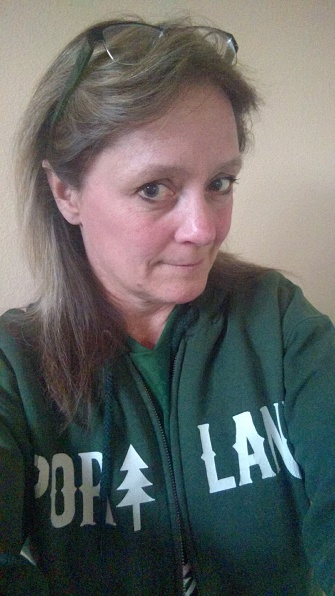
By Sheba Rawson // @shebainpdx
I’ve been a Portland Timbers supporter for about fourteen years, but I’ve only been writing about them since 2017. And, like any career educator, I figure if I’m going to write about something I need to do my homework.
As I learn more about the league, I’m doing my best to get up to speed with everything from roster rules to international slots to homegrown status to TAM, GAM, and more. There are some aspects of MLS that are incredibly difficult to get a handle on. Some pieces of information are easier to find than others, and even when information is publicly available it is often not clearly spelled out and/or it is not easy to find in one place.
I am still at the beginning stages of information gathering and synthesis. I look forward to learning more and am happy to share my journey with you all in the meantime. Today, we’ll answer the question: Who gets to be on my team? What are the roster rules?
Roster basics
How many players are on a team? You’d think that would be a straightforward question, but it turns out the answer is “it depends.” If you’re an MLS club, you can have up to 30 people on your first team roster, but only under certain conditions. (And no, I’m not counting Atlanta United’s roster of 31, since that includes “Atlanta United Fans” as their 31st player.) Here’s how it works.
Senior roster: 20
Spots 1-20 on the roster are the senior roster spots. The salary for these 20 players counts against the club’s salary cap (this year that’s $4,035,000). The minimum salary for players on the senior roster is $67,500.
Supplemental Roster: up to 4
The supplemental roster can have up to 4 players. Those 4 players do not count against the club’s salary cap. Supplemental roster players can include:
- Minimum salary players
- Generation Adidas Players
- Designated Players eligible for the MLS SuperDraft
- Homegrown Players earning more than the senior minimum salary
Reserve Roster: 4-6
The reserve roster can have 4 players, or as many as 6 players if at least two of them are Homegrown Players. Reserve players have to be 24 or younger by year of birth during the league year. Their base salary is the reserve minimum salary (this year that is $54,500) unless they are Homegrown Players, in which case their salary can be more. So, if you have enough homegrown players, if you can stash at least two of them on the reserve roster, your official first team roster can have up to 30 players.
More roster rules: international spots and homegrown spots
This year, there are 184 international roster spots divided among the 23 clubs, which is 8 spots per club. International spots are tradable, and not just for the current year so some teams may have more than 8 international spots being used any given year.
If you’re a Canadian team, your domestic players are either Canadian citizens, or U.S. citizens or permanent residents (i.e. they have U.S. green cards); or they’ve been granted refugee or asylum status, or they are Homegrown Internationals (internationals who played for a qualifying academy team).
As previously noted, you can also stash homegrown players on the supplemental or reserve roster; but if you have a homegrown player on your supplemental or reserve roster and you move him up to the senior roster during the season, you can’t move him back down unless he is on a minimum salary.

So, why doesn’t my first team have a full squad?
There are many reasons that the first team might not be using all 30 slots. It might be that they don’t have enough homegrown players to fill out the supplemental roster, or that they’d run afoul of the salary cap by adding another player, or that the player they want would require an international slot and the team doesn’t have any more at the moment.
The size of the roster can also be impacted by whether or not the first team has a USL affiliate, and where that USL affiliate is located.
USL Affiliates
In 2013, USL and MLS reached an agreement that allowed MLS teams to have second/reserve teams in USL. These USL second teams allow MLS teams to cast a wider net and sign a larger group of players than are allowed under MLS roster rules (maximum of 30 players).
As of this writing, most MLS teams have USL teams (only Columbus, New England, and Orlando City don’t have USL teams). MLS teams can use USL as a training ground for future MLS players, promoting the best of their USL players to their first teams, using the league’s USL Priority Player rule (priority rights to up to three players from USL affiliate).
Depending on how we count LAFC’s affiliate (I mean, Irvine isn’t that far from Los Angeles, but it isn’t exactly right next door either), about half of the USL affiliates are geographically close to their MLS parent teams, sometimes training and/or playing in the same facility.
Here is where I can see the tremendous advantage of having your USL affiliate geographically close to you: you don’t have to make official declarations of loans to USL teams for all of the players playing on your USL squad; it can happen on a week-to-week basis. In the case of the Timbers, for example, this has meant that first team players like Diego Chara and Vytautas Andriuškevičius can easily play for a game or two on the USL side as they recovered from injury and returned to match fitness, all while having access to first team trainers and facilities.
Conversely, players who are officially on the first team’s supplemental roster can still get regular playing time on the second squad, while being ready at a moment’s notice for a late call-up if the roster is thin on any given week (as happened to our squad last year v. the Vancouver Whitecaps).
If your USL affiliate isn’t geographically close to you, on the other hand, you pretty much have to decide when somebody is officially loaned out to USL. I assume that this is why, for example, the Colorado Rapids list only 24 active players on their MLS first team, with six players loaned out to USL sides.
The Rapids’ USL affiliate is the Charlotte Independence, which is over 1,500 miles away from the Rapids’ training facility. Charlotte Independence has 26 on its USL roster. In contrast, the Timbers have 29 active players on their MLS first team, with only 16 players listed on the Timbers 2 USL roster.
If you want to know more about who is officially on your team’s first squad, check out the roster page at the MLS website. It breaks down each team into senior, supplemental, and reserve rosters, as well as noting whether a player is a homegrown player, a designated player, or a player taking up an international roster slot, as well as players out on loan and players with season-ending injuries.
Those are the roster basics as I understand them. If you have questions or feedback, please feel free to leave them in the comments below, or hit me up on twitter at shebainpdx. Next time the Timbers have a bye, we’ll take a look at the rules for international roster spots.
Yowza.
Check us out on Instagram @mlsfemale


